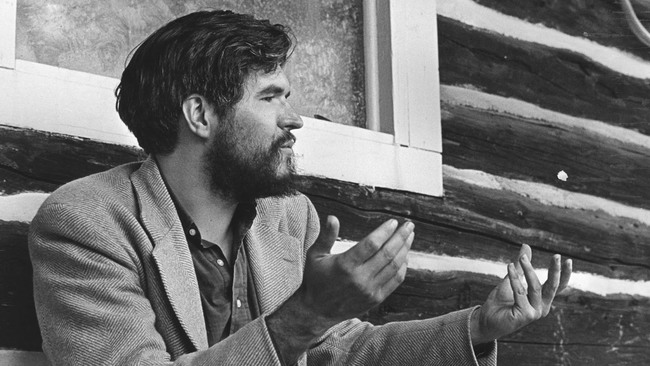Books: Brakhage, Godowsky, and More

Anthology Film Archives and Light Industry are teaming up on a new edition of Stan Brakhage’s Metaphors on Vision. “First published in 1963 by Jonas Mekas as a special issue of Film Culture, it stands as the major theoretical statement by one of avant-garde cinema’s most influential figures, a treatise on mythopoeia and the nature of visual experience written in a style as idiosyncratic as his art.” Edited by P. Adams Sitney, this new volume is slated for a September 26 release.
Catherine Grant alerts us to a new, freely accessible title, Cinema, Trance and Cybernetics, in which Ute Holl “analyzes three major fields of experimental and anthropological filmmaking: the Soviet avant-garde with Dziga Vertov and his background in Russian psycho-reflexology and theory of trance; Jean Rouch and his theory of cine-trance and the feed-back; and the New American Cinema with Maya Deren and Gregory Bateson conceptualizing the organization of time, space, movement and feedback trance in anthropological filmmaking.”
Fernando F. Croce’s tweeted a good look at Steven Spielberg: Nostalgia and the Light, a 2012 Reverse Shot symposium in print form, published in conjunction with the ongoing Museum of the Moving Image series, See It Big! 70 mm.
The Quietus has posted a generous excerpt from Ben Lerner’s introduction Studio: Remembering Chris Marker, a collection of photographs by Adam Bartos with a text by Colin MacCabe. “He invented the genre of the essay film; he composed what is widely considered the greatest short film ever made, La Jetée, in 1962; in the late nineties, he debuted one of the first major artworks of the digital age, the cd-rom, Immemory. Even Marker’s relation to his own celebrity . . . was an evasive masterpiece: until his death in 2012 at ninety-one, he was everywhere and nowhere, refusing both the haughty fantasy of nonparticipation and the seductions of spectacle.”
Vulture presents an annotated list of “100 Great Works of Dystopian Fiction,” while Nate Jones writes up a “Timeline of The Dark Tower’s Long Journey to the Screen.”
“Once a famous beauty, by the late 1950s Dagmar Godowsky found herself subsisting on caviar, cake, and tales of the past,” writes Luisa Zielinski for the Paris Review. “Typecast as a vamp in the silent-screen era of the early 1920s, she had ‘hissed her way through a thousand scenes.’” Zielinski tells the ridiculously engaging story of how Godowsky nearly drove her ghostwriter, playwright Sandford Dody, over the edge. “Published as First Person Plural in 1958, the memoir takes us from the present day into her childhood, and then back, replete with cameos from the Fitzgeralds, Dorothy Parker, Adolf Hitler, Emperor Franz Josef, and just about all of golden-era Hollywood.”
Lisa Rosman recommends Eve Babitz’s Slow Days, Fast Company: The World, the Flesh, and L.A. “In the 1960s, she became a ‘groupie-adventuress’ who designed album covers for Linda Ronstadt and Buffalo Springfield, and counted everyone from Frank Zappa to Salvador Dali among her friends, and Steve Martin, Jim Morrison, Harrison Ford, and both Ruscha brothers (photographer Paul and painter Ed) among her lovers. She also was the nude girl in the famous photograph of Marcel DuChamp playing chess. But none of these biographical details are as compelling as Eve’s prose.” Last year, Vogue ran Matthew Specktor’s introduction to the new edition.
Women and Hollywood has posted an excerpt from Deborah Jermyn’s entry in the Bloomsbury Companions to Contemporary Filmmakers series, Nancy Meyers: “The flippant suggestion that Meyers makes ‘softcore designer-pornos’ glibly denigrates her skills as a female director (and, by extension, questions and undermines the tastes of her audiences), slyly reminding us in the process that she is out of place in having achieved such mainstream commercial momentum in Hollywood, that the ‘proper’ territory for women in film lies not somewhere behind the camera or in command of it, but in the realm of sexualized spectacle.”
The LA Weekly presents an excerpt from Hollywood Obscura: Death, Murder and the Paranormal Aftermath in which “Brian Clune highlights twelve L.A.-set murders and tragic deaths, from the (apparently) accidental death of Thelma Todd in 1935 to Biggie Smalls’s murder outside the Petersen Automotive Museum in 1997. In this, the book's sixth chapter, Clune looks back at the ‘Los Feliz Murder Mansion,’ where in 1959 Dr. Harold Perelson bludgeoned his wife to death and struck his daughter with a ball-peen hammer before killing himself.”
For news and items of interest throughout the day, every day, follow @CriterionDaily.



